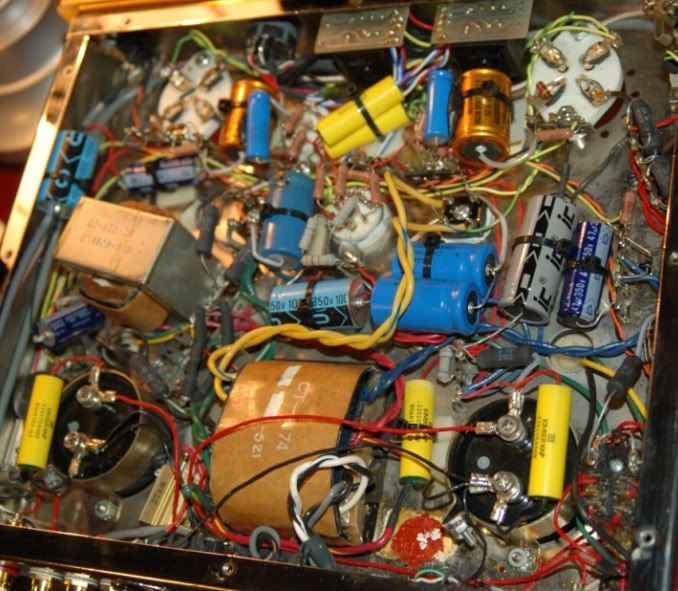Hirsch
Why is there a chaplain standing over his wallet?
- Joined
- Aug 12, 2001
- Posts
- 7,826
- Likes
- 71
Quote:
Massive b..

Actually, I wanted to agree completely with what Nate is saying here. Tube amps contain dangerous, potentially lethal, voltages. These voltages can be present in capacitors long after an amp has been unplugged. If you don't know what you're doing, don't do it around something that can kill you.
Note that the hand in pocket procedure might not stop you from being a ground, but at least the current won't be going from one hand to the other...straight through your chest.
| Originally Posted by n_maher /img/forum/go_quote.gif I'm saying it because most folks don't even know what you are talking about when you say "allow the caps to discharge" and knowing how found Mikhail is of large (capacitance) power supply capacitors it may take a while for them to discharge - and that's assuming that there are bleeder resistors. I personally haven't looked at enough of his amps to know how Mikhail addresses this. Since there are several unknown factors like this it would seem to me that the prudent advice would be to at least caution people about the danger that these types of amps (not just Mikhial's, any high-voltage tube amp) can and do represent. I don't know about you but I've been thumped by a 300V B+ before and it's not something that I wish anyone else to experience. My heart survived it, someone else's might not. So my advice is the same, if you don't know what you're doing please be careful. If you insist on opening it up make sure that the amp has been unplugged for a matter of hours (not minutes) and once the chassis cover is off keep one hand in your pocket (so you cannot become the path to ground). |
Massive b..

Actually, I wanted to agree completely with what Nate is saying here. Tube amps contain dangerous, potentially lethal, voltages. These voltages can be present in capacitors long after an amp has been unplugged. If you don't know what you're doing, don't do it around something that can kill you.
Note that the hand in pocket procedure might not stop you from being a ground, but at least the current won't be going from one hand to the other...straight through your chest.




